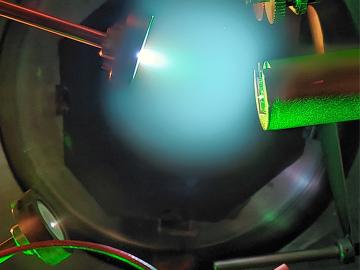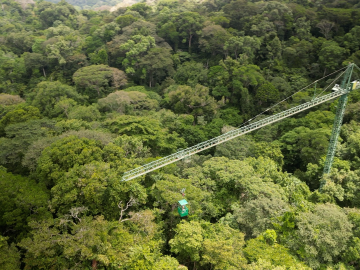
Filter News
Area of Research
News Type
News Topics
- (-) Artificial Intelligence (25)
- (-) Bioenergy (40)
- (-) Composites (14)
- (-) Energy Storage (45)
- (-) Environment (88)
- (-) Machine Learning (24)
- (-) Mercury (7)
- 3-D Printing/Advanced Manufacturing (47)
- Advanced Reactors (15)
- Big Data (29)
- Biology (48)
- Biomedical (24)
- Biotechnology (11)
- Buildings (31)
- Chemical Sciences (22)
- Clean Water (21)
- Computer Science (56)
- Coronavirus (17)
- Critical Materials (14)
- Cybersecurity (9)
- Emergency (1)
- Exascale Computing (4)
- Fossil Energy (1)
- Frontier (4)
- Fusion (18)
- Grid (29)
- High-Performance Computing (23)
- Hydropower (8)
- Irradiation (2)
- Isotopes (18)
- ITER (4)
- Materials (45)
- Materials Science (49)
- Mathematics (8)
- Microscopy (22)
- Molten Salt (5)
- Nanotechnology (18)
- National Security (20)
- Neutron Science (37)
- Nuclear Energy (35)
- Partnerships (4)
- Physics (20)
- Polymers (15)
- Quantum Computing (6)
- Quantum Science (17)
- Security (8)
- Simulation (17)
- Space Exploration (10)
- Statistics (1)
- Summit (10)
- Transportation (48)
Media Contacts

Researchers at Stanford University, the European Center for Medium-Range Weather Forecasts, or ECMWF, and ORNL used the lab’s Summit supercomputer to better understand atmospheric gravity waves, which influence significant weather patterns that are difficult to forecast.

The ForWarn visualization tool was co-developed by ORNL with the U.S. Forest Service. The tool captures and analyzes satellite imagery to track impacts such as storms, wildfire and pests on forests across the nation.

Researchers have identified a molecule essential for the microbial conversion of inorganic mercury into the neurotoxin methylmercury, moving closer to blocking the dangerous pollutant before it forms.

Scientists at ORNL are studying the failure mechanisms of a new solid electrolyte battery to enhance long-term storage for renewable energy, aiming to make wind and solar power more reliable for the electric grid.

Oak Ridge National Laboratory researchers are using a new bioderived material to 3D print custom roosting structures for endangered bats.

The Advanced Plant Phenotyping Laboratory at ORNL utilizes robotics, multi-modal imaging, and AI to enhance understanding of plant genetics and interactions with microbes. It aims to connect genes to traits for advancements in bioenergy, agriculture, and climate resilience. Senior scientist Larry York highlights the lab's capabilities and the insights from a new digital underground imaging system to improve biomass feedstocks for bioenergy and carbon storage.

Daryl Yang is coupling his science and engineering expertise to devise new ways to measure significant changes going on in the Arctic, a region that’s warming nearly four times faster than other parts of the planet. The remote sensing technologies and modeling tools he develops and leverages for the Next-Generation Ecosystem Experiments in the Arctic project, or NGEE Arctic, help improve models of the ecosystem to better inform decision-making as the landscape changes.

In a game-changing study, ORNL scientists developed a deep learning model — a type of artificial intelligence that mimics human brain function — to analyze high-speed videos of plasma plumes during a process called pulsed laser deposition.

Scientists using high-resolution aerial scans and computational modeling concluded that wildfires, storms and selective logging have become key drivers behind rainforest carbon emissions, outpacing clear-cutting practices.

As a mechanical engineer in building envelope materials research at ORNL, Bryan Maldonado sees opportunities to apply his scientific expertise virtually everywhere he goes, from coast to coast. As an expert in understanding how complex systems operate, he’s using machine learning methods to control the process and ultimately optimize performance.


